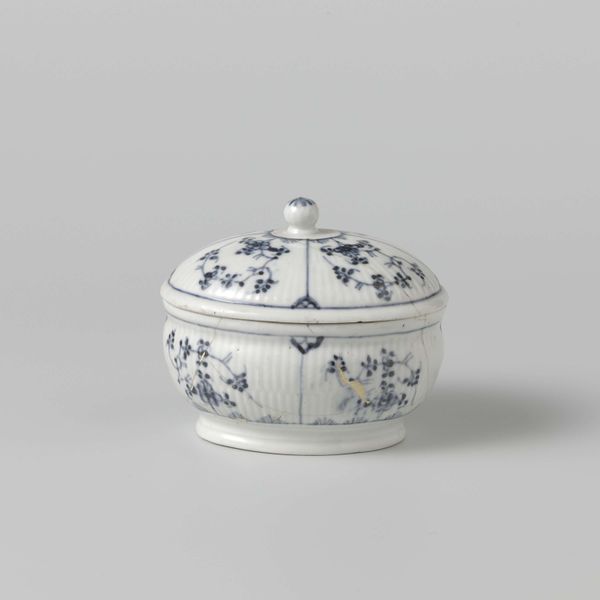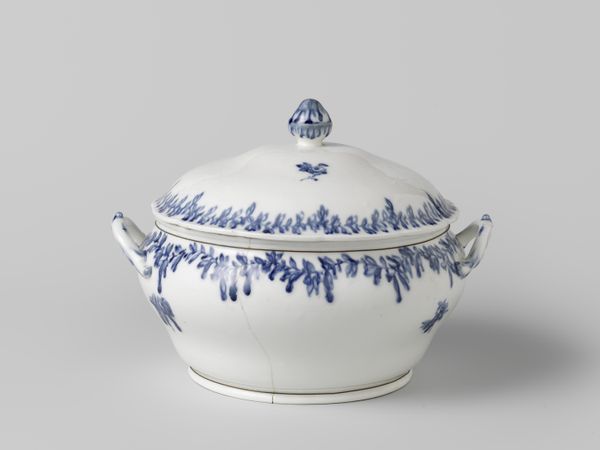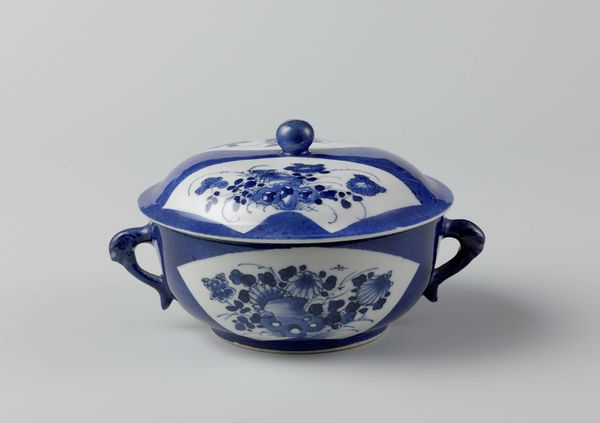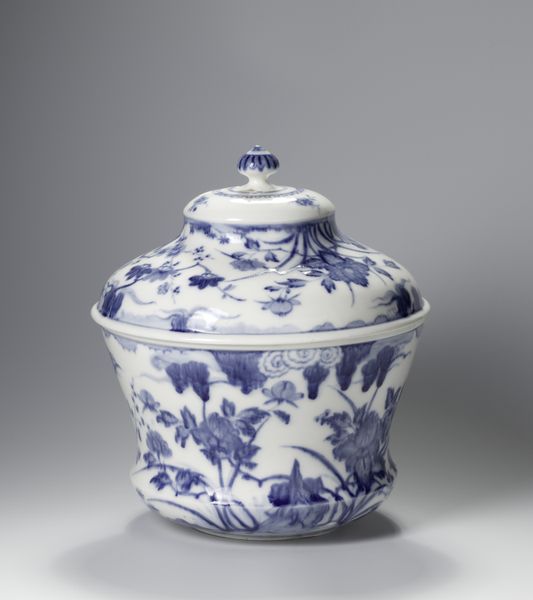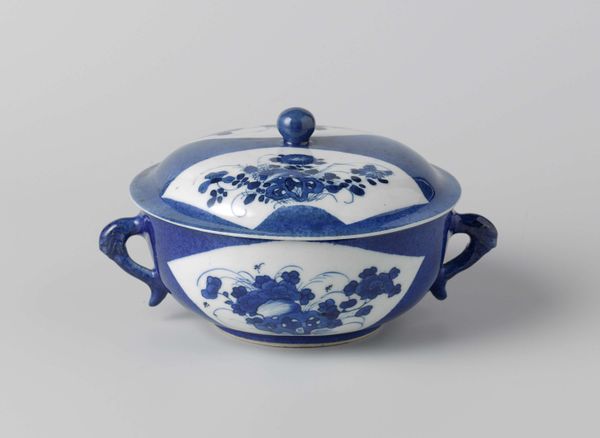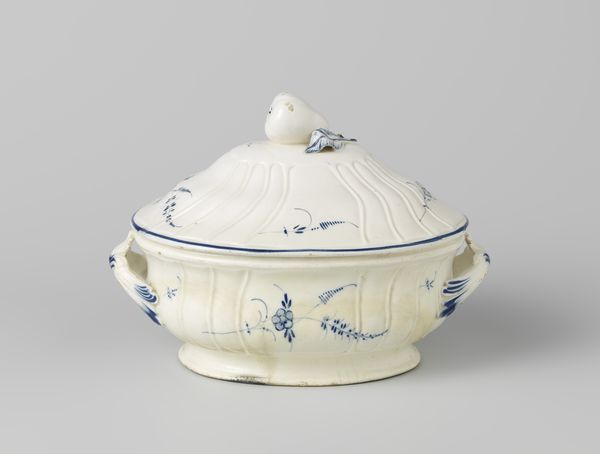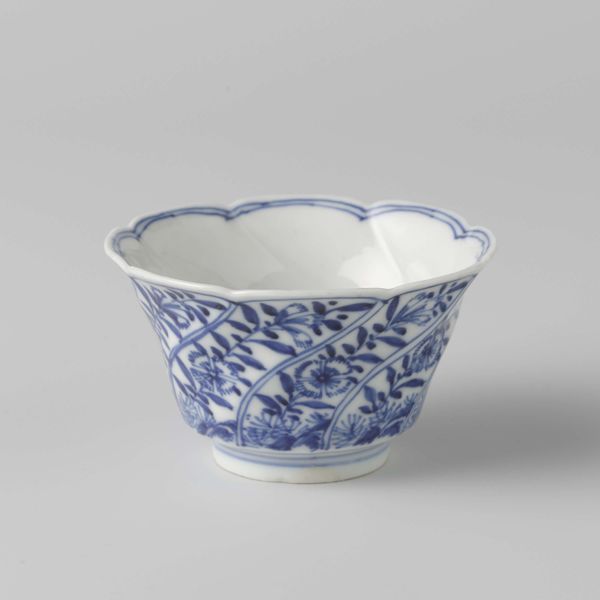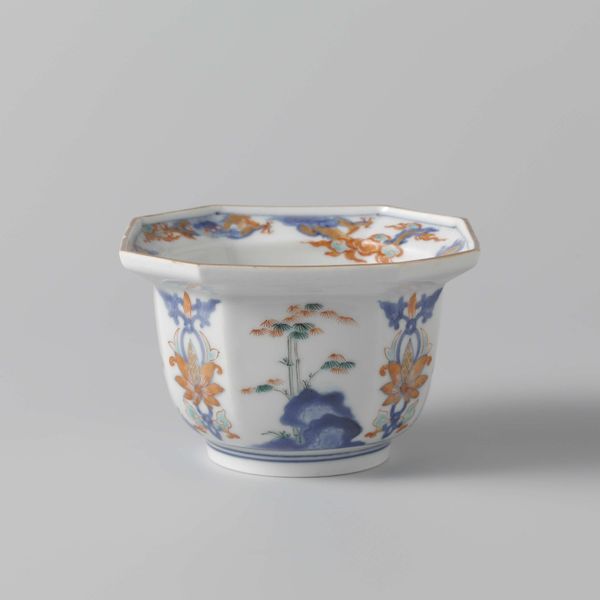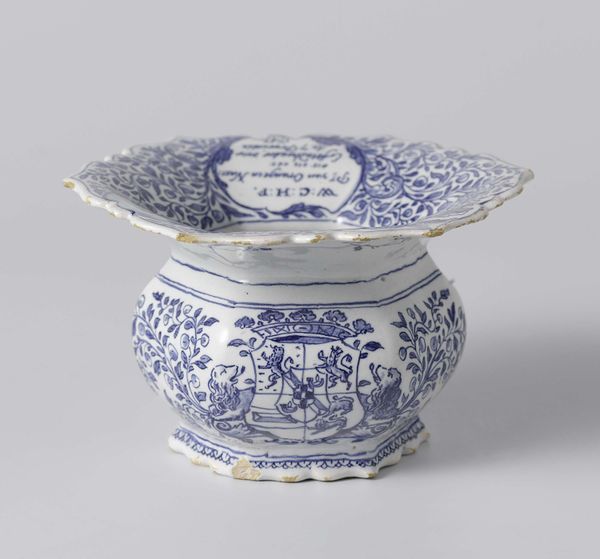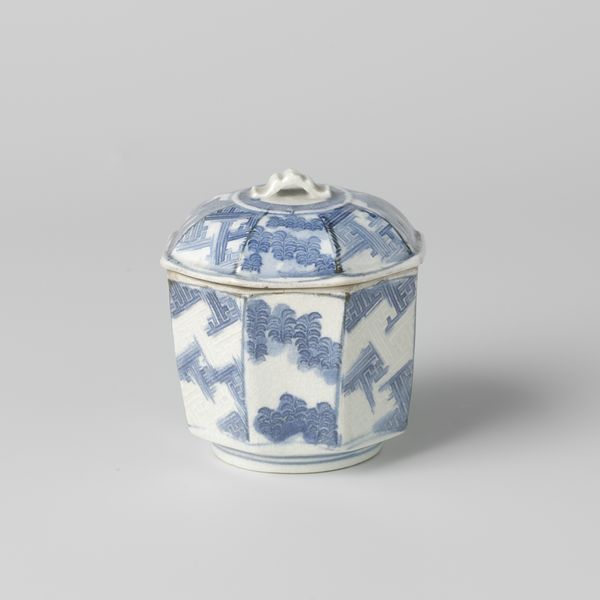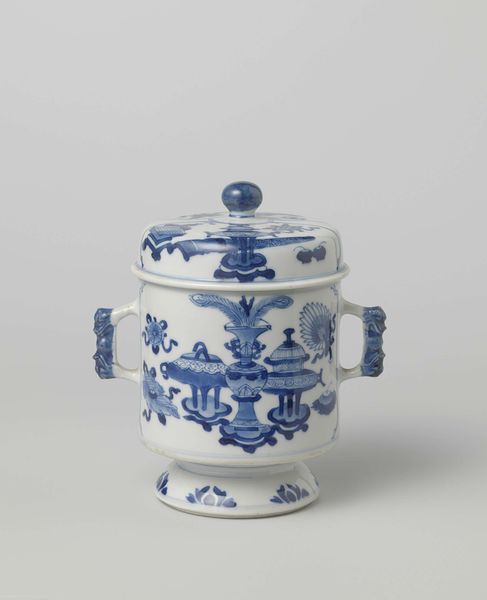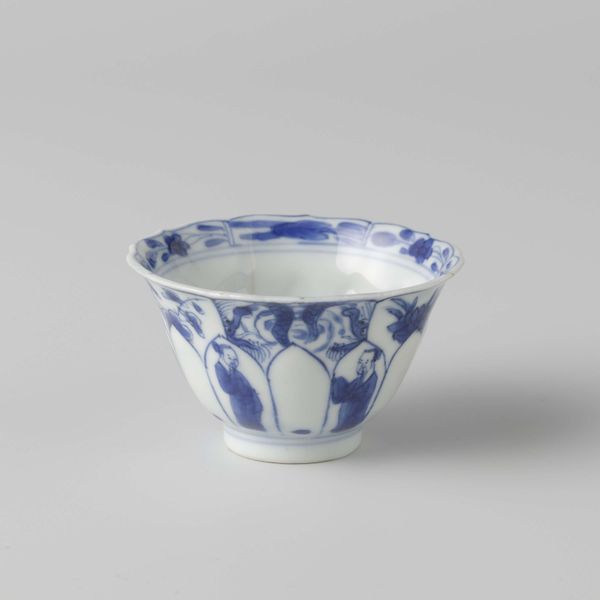
ceramic, porcelain
#
dutch-golden-age
#
ceramic
#
porcelain
#
decorative-art
Dimensions: height 8.9 cm, depth 12.7 cm, width 10 cm, height 6.5 cm
Copyright: Rijks Museum: Open Domain
Curator: Here we have a beautiful example of Dutch porcelain from the late 18th century. This piece, made in Loosdrecht around 1778-1782, is titled "Butter Dish, Painted with Flower Branches and Butterflies." The delicate blue decoration is quite charming, isn't it? Editor: It is, in a very restrained, almost fragile way. The limited color palette—just that cobalt blue on the stark white—gives it a certain austere elegance, despite the naturalistic motifs. It feels… delicate, maybe even precious in a social context. Curator: Precisely. Loosdrecht, where this piece was crafted, holds significance as one of the earliest porcelain factories in the Netherlands. Think about the social context: these weren't mass-produced objects, but luxury goods, signifying a certain level of wealth and status in Dutch society. Editor: And luxury, of course, is never neutral. To possess such an item then speaks volumes about class and access, reflecting colonial trade routes through which raw materials and, ultimately, inspiration would travel. Who had access to butter, for that matter, and what did it mean to have a dedicated, ornamented vessel for it? Curator: A fascinating point. It does make one consider the politics embedded in something so seemingly innocuous. The very act of displaying such a piece broadcasted affluence. But also, observe how the floral design and insects tie the object to nature in an idealized, almost pastoral way. Editor: It also makes me think about labor—the unseen hands that shaped and painted this. Dutch Golden Age paintings often romanticize rural life while obscuring the realities of work, power, and who profits from that labor. To me, that contrast embodies so much tension. This idealized portrayal is then being transferred into other decorative objects such as the object at hand which depicts flora. Curator: The artistry, nonetheless, is evident. Note the crispness of the painted lines, the subtle variations in tone within that single blue hue. It testifies to the skill of the painter. These wares circulated widely within elite circles; influencing tastes and decorative trends. Editor: Absolutely, skill and beauty aren't divorced from socio-economic factors; to discuss the first, we must also acknowledge the latter. The 'Butter Dish' encapsulates a whole history of production, trade, and the performance of wealth during the Dutch Golden Age. Curator: I will remember that when regarding the artwork next time. Editor: Likewise. It adds such a needed, more comprehensive layer to appreciating art from this period.
Comments
No comments
Be the first to comment and join the conversation on the ultimate creative platform.

